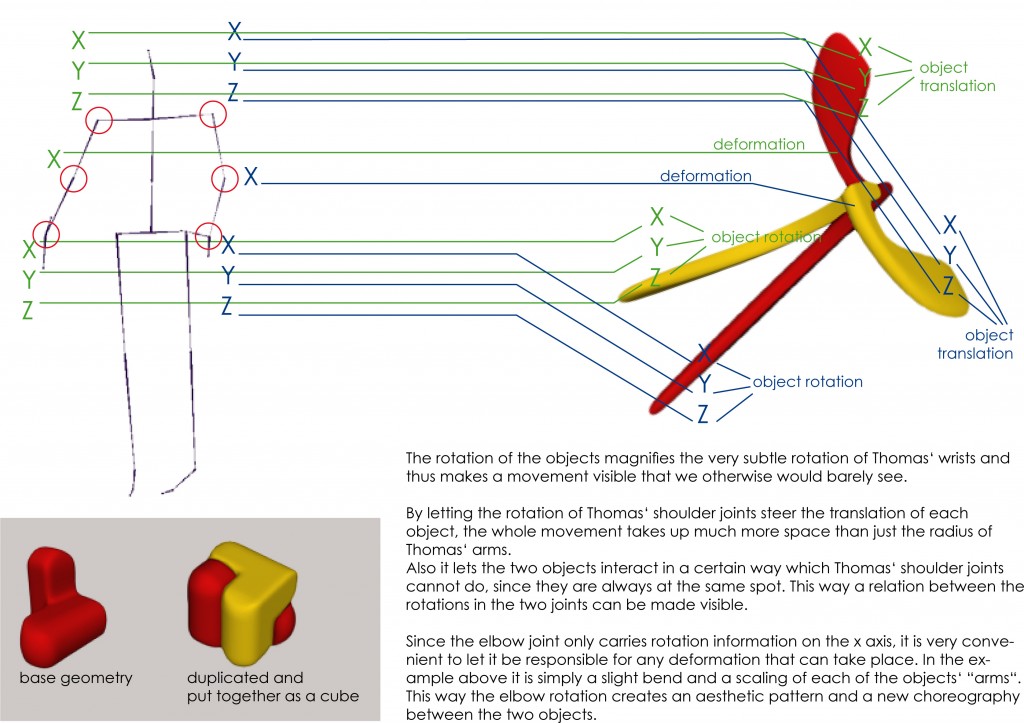Risky Weight in Bebe Miller’s work
Posted on July 12th, 2013
One of the ongoing interests in our project is Bebe Miller Company’s use of what they call Risky Weight. In developing our terminology, Norah and graduate research assistant Malory Spicer have been compiling descriptions of Risky Weight from the dancers, Bebe, Talvin Wilks the dramaturge, and our consulting Laban Movement Analyst Melanie Bales. When reading these descriptions I was drawn to this definition of Risky Weight: the whole weight is a little more at risk and less linear and sequential to the body.
As we were working on this concept, Norah asked me about the possibility of tracking center of gravity in motion capture data and adding this information to our understanding of Risky Weight, a concept that has to do both with the viewer’s perception and the dancer’s use of his or her weight and gravity. To open this description further I assumed that this means creating situations when a performer’s body gets close to losing its balance, subsequently gaining stability.
In researching center (and line) of gravity and base of support in relationship to risky weight I discovered several perspectives on the estimation and perception of body balance. The precise biomechanics based estimation requires knowing the body weight and considering percentage of that weight associated with particular part of a body (see calculations detail in this ASU Biomechanics explanation). The visual perception perspective, based on the qualitative approach to this problem in animation is reflected in the collection of tutorials at the Animation Physics website. It demonstrates that a less precise approach to estimating center of gravity is still valid as long as the main principle is followed:
The body is off balance when the Center of Gravity (CG) is outside the Base of Support (BS). Thus the most stable position is when the two overlap (ie the person is laying flat on the floor), the next best thing is when the CG is directly above the BS.
Since Motionbuilder (our motion capture processing software) provides a basic operator which can estimate the CG (not as precise as biomechanics approach, but perhaps close enough), I used it to visualize the relationship of Center of Gravity, Line of Gravity (vertical line passing through the CG into the ground) and Base of Support. This exploration in Bebe’s work seems useful since the risk the performer takes is that of falling, which happens when their body is off balance.
In order to establish the BS I connected each foot’s ball and heel joints of the mocap skeleton into a rectangle stretched between the two feet. The BS is reduced to a triangle when one of the joints is off the ground and to the area of one foot when the other foot is lifted. My threshold for when the foot is considered to be off the ground is set to 20cm to avoid excessive flickering caused by frequent shape change for the base of support, this can certainly be adjusted for higher precision if necessary.
This quick study may reveal that the qualitatively observed risky weight aspect of Darrell’s performance probably does not come from the state of physical imbalance. The occurrences and durations of this state are not that significant. Again, I am inclined to hypothesize that the viewer’s anticipation of the body becoming off balance is what creates the impression of Risky Weight but there is more to be explored here.
– Vita Berezina-Blackburn, Animation Specialist/ACCAD
